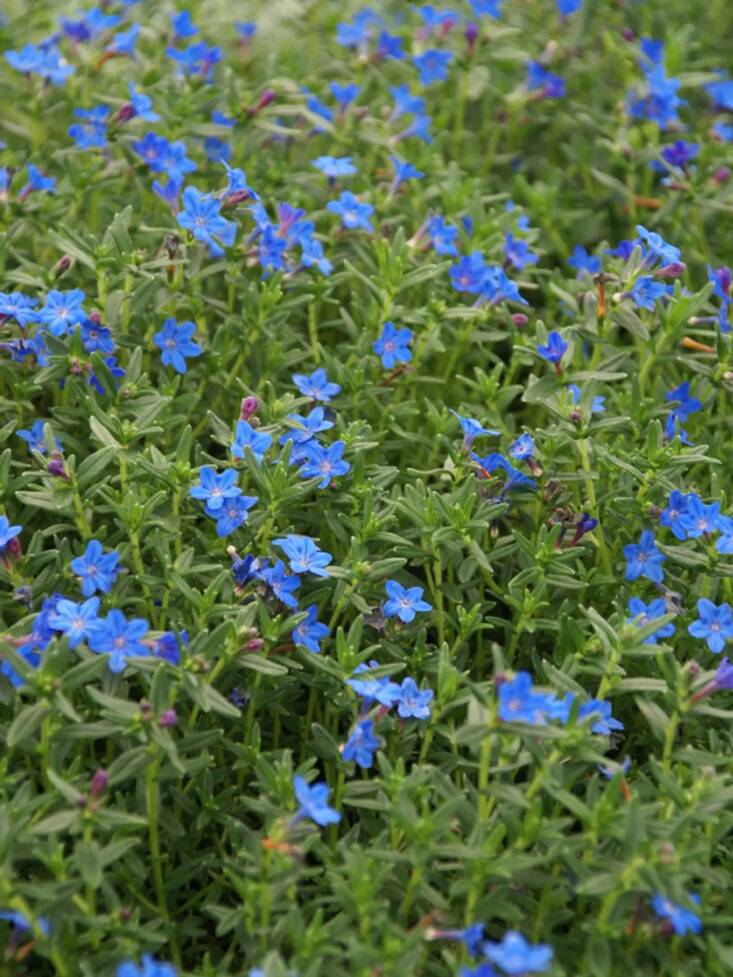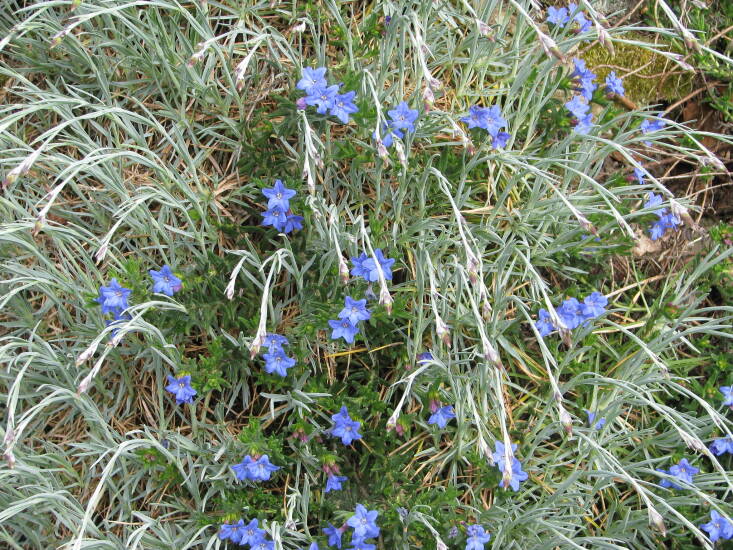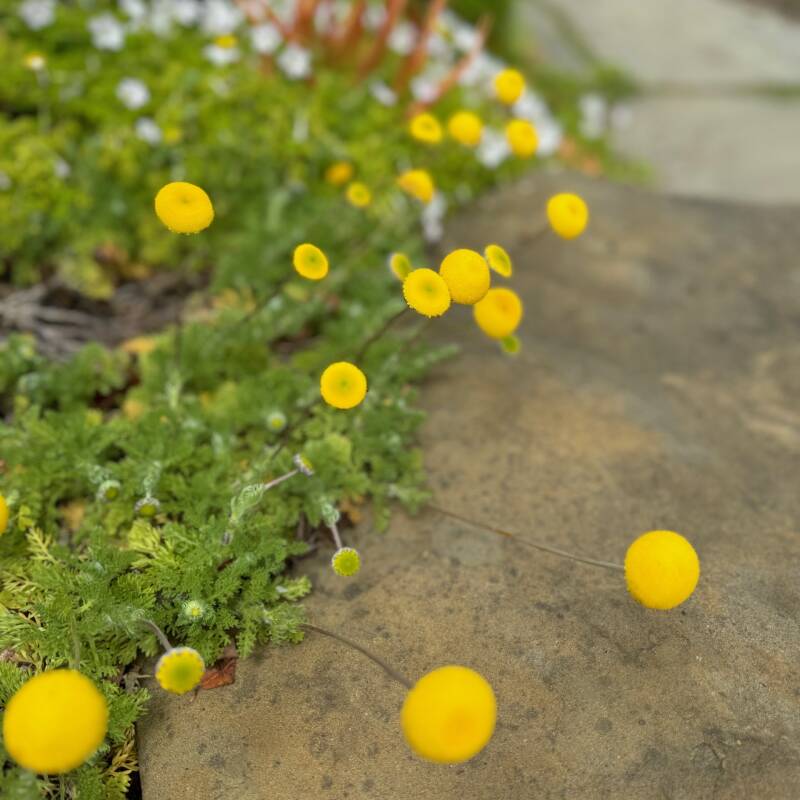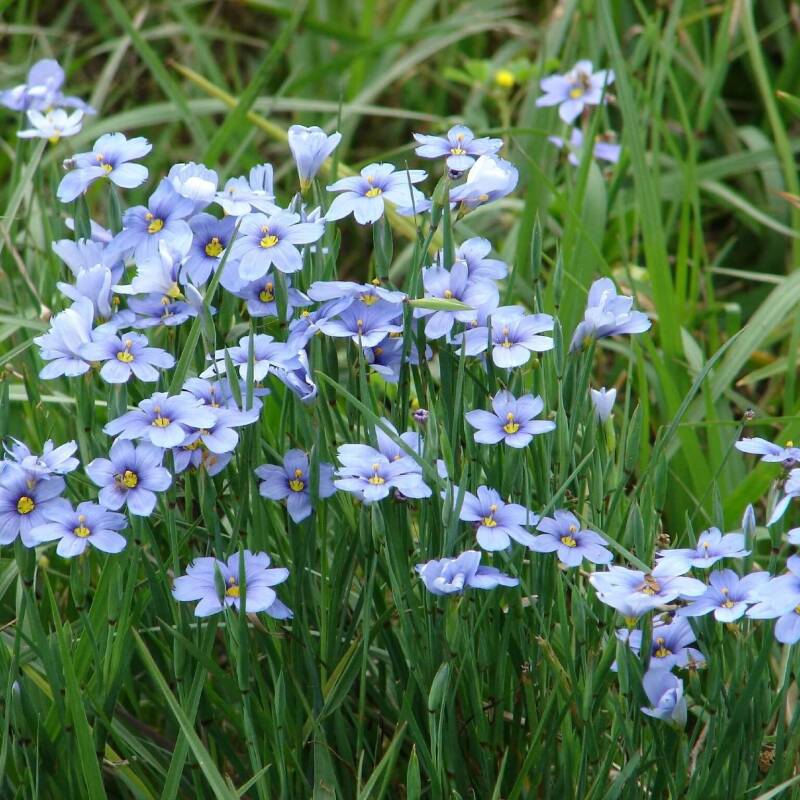Lithodora
I once believed that true blue flowers were like unicorns of the garden world—until I discovered a slew of them, eventually stumbling upon the ultra-blue, evergreen, pollinator-friendly Lithodora. This easygoing groundcover was, of course, immediately added to my growing list of plants that fulfilled a color wish.
The genus name, Lithodora, comes from the Greek word lythos, meaning stone, and dorea, meaning gift. It’s an apt moniker, considering hardy Lithodora makes an excellent addition to rock gardens. With a low, sprawling mound that reaches about 3 feet wide but stays relatively low (6 to 10 inches), this groundcover is also sturdy enough that it works as a small-scale means of controlling erosion on slopes and hillsides. Also because it grows so densely, it can act as a natural weed suppressor and a living mulch.
Feeling blue never felt so good. Please keep reading to learn more about this happy and blue-hued groundcover:

Showtime for Lithodora starts when the small star-shaped flowers emerge and almost smother the plant in late spring; the blooms continue through summer. If you want to create a swath of color as blue as the sea, plant Lithodora 15 inches apart. This plant looks lovely in a Mediterranean-style garden, paired with lamb’s ears, olive trees, rosemary, and Westringia. But don’t forget that it also sweetly tumbles over edges, making it a great addition to containers filled with perhaps white cosmos or a fantastic white dahlia.
Cheat Sheet

- Could be the slightly fuzzy leaves, or the fact that it is low-growing, but either way this plant is deer-resistant.
- Butterflies and small bees are attracted to the starry flowers.
- Perfect for a pollinator garden, rock garden, added to pots or hanging baskets where it will trail over the edges.
- This groundcover can also be planted along walkways or patios where the petite flowers can be appreciated up close.
Keep It Alive

- Hardy in USDA Zones 6-10.
- Plant in a sunny to partly sunny spot. It resents a very hot spot, but too much shade inhibits flowering.
- Appreciates normal to slightly acidic soil that drains well. Avoid heavy clay soil.
- Lithodora likes average amounts of water.
- Prune after flowering in late summer to refresh and help maintain a tidy habit. Otherwise, wait until early spring to prune your plant. At this time, remove any darkened leaves that could encourage rot and/or disease.
- Can self-seed but not in a scary way. Pro tip: not all Lithodora varieties are propagated from seed, and seed-grown plants might not appear as true-to-type, especially when it comes to cultivars.
See also:
- Gardening 101: Blue Flax
- Gardening 101: Bluestar
- Virginia Bluebells: Native, Pretty, Shade-Tolerant—and Edible Too










Have a Question or Comment About This Post?
Join the conversation